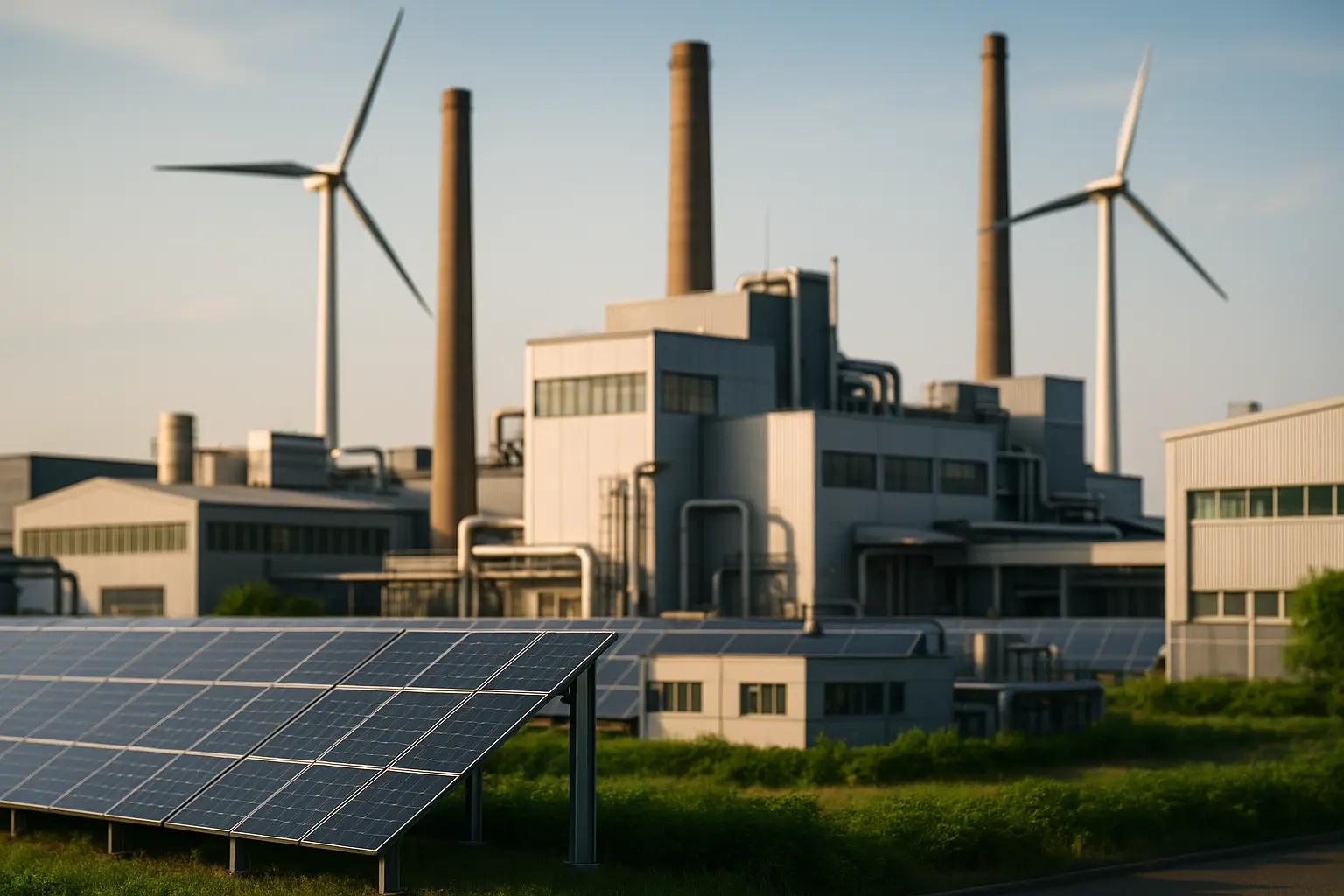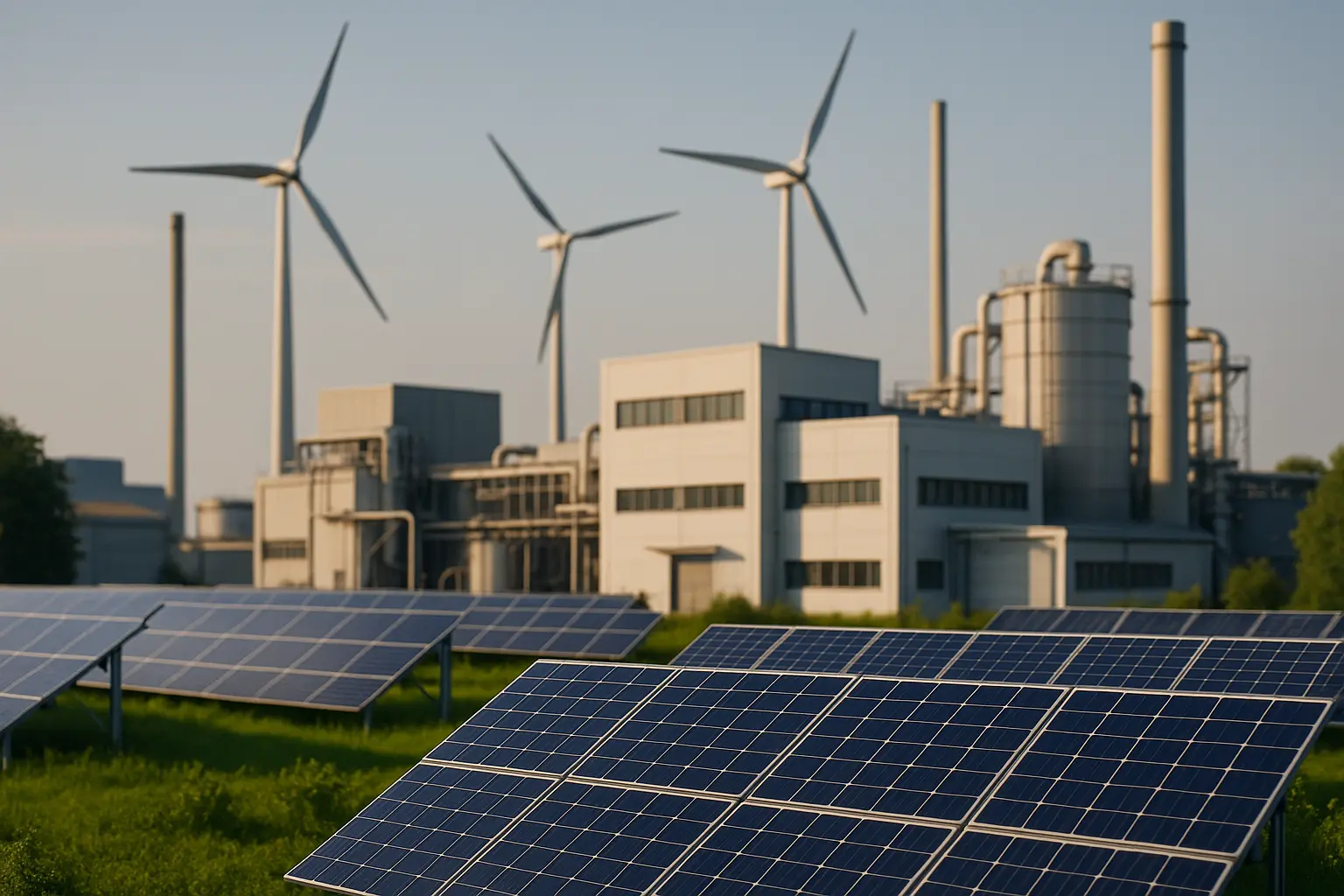Imagine a world where our power does not come from the depths of the Earth but from the skies above us, from the wind that caresses our lands, and from the waters that ripple through our continents. The energy transition is more than just a buzzword; it represents a profound shift in how we interact with the global environment, aiming to reduce carbon emissions and combat climate change. In an age where the call for clean and renewable technologies rings louder than ever, industries around the world face both challenges and immense opportunities.
This article delves into the intricate dance of switching from fossil fuels to low-carbon alternatives, exploring the hurdles and the potential triumphs that lie ahead. With insights from industry experts like McKinsey, we will unravel the layers behind the sector‘s transformation and assess how various countries are navigating this dynamic landscape. Join us as we embark on this energy journey.
Understanding the Energy Transition
The energy transition can be likened to navigating a vast sea of change; it requires both foresight and adaptability. As the world sets its sights on reducing carbon emissions and embracing clean energy, industries must pivot away from fossil fuels and towards renewable solutions.
Solar power and wind power have emerged as frontrunners in this transformation, marking a significant shift from the traditional power sources that have fueled our economies for decades. While the journey to renewable adoption presents a formidable challenge, it also offers the promise of a low-carbon future, wherein the global sector can significantly reduce its environmental footprint.
Key Drivers of the Energy Transition
Firstly, the pressing need to address climate change has been instrumental in accelerating the transition. With the global community witnessing extreme weather events and rising temperatures, there’s a concerted push for an energy revolution.
Secondly, technological advancements have made renewable technologies more efficient and affordable. Innovations in solar cells and wind turbine designs have reduced costs, making it easier for industries to invest in clean energy.
Lastly, consumer demand for sustainable practices cannot be ignored. As people become more environmentally conscious, industries are under increasing pressure to adopt renewable solutions.
In summary, the energy transition stands as a testament to our collective commitment to a sustainable future, but achieving this vision requires navigating complex hurdles.
Challenges in the Energy Transition
Embarking on the path of energy transition is like setting foot on a challenging terrain, where each step demands careful planning and strategic execution. The road to a renewable future is fraught with obstacles, from the financial investments required to the technological barriers that industries must overcome.
Financial Considerations
Renewable technologies often come with high upfront costs. Industries must weigh the immediate financial burden against the long-term payoff of reduced carbon footprints and energy independence. While government subsidies and incentives can alleviate some of these costs, they are not universally available, leading to disparities among different countries.
Infrastructure and Integration
Another significant challenge lies in the integration of renewable technologies into existing infrastructure. Transitioning from a predominantly fossil fuel-based system to one that supports solar and wind power requires significant modifications in energy grids and storage solutions.
Technological Hurdles
Moreover, while renewable technologies have advanced, they are not without their limitations. Energy storage remains a crucial issue, with current battery technologies not yet fully capable of supporting a consistent energy supply.
Workforce and Skill Development
As industries pivot to renewable energy, there is a growing need for skilled professionals who can manage and innovate within this new landscape. Retraining existing workers and attracting fresh talent must be prioritized to ensure a seamless transition.
While these challenges may seem daunting, they also present the opportunity to innovate, collaborate, and drive meaningful change across the global energy landscape.

Opportunities in Renewable Technologies
Despite the formidable challenges, the energy transition opens a gateway to a myriad of opportunities, particularly in the realm of renewable technologies. Embracing these opportunities can lead to significant advancements in both environmental sustainability and economic growth.
Economic Growth Potential
Firstly, the transition promises to be an economic boon. Investment in renewable energy sectors can drive job creation, with roles spanning manufacturing, installation, and maintenance. As the demand for clean energy surges, industries that adapt quickly may see increased profitability and market share.
Innovation and Technological Advancements
The pivot to renewables acts as a catalyst for innovation. From developing more efficient solar panels to creating advanced energy storage solutions, the possibilities are vast. These innovations not only enhance energy efficiency but also position companies as leaders in clean technology.
Environmental Impact
Moreover, the environmental benefits cannot be overstated. By reducing reliance on fossil fuels, industries can significantly lower their carbon emissions. This shift contributes to a healthier planet, aligning with global efforts to mitigate climate change.
Energy Independence and Security
Finally, transitioning to renewables enhances energy independence. Countries that harness their natural resources, such as solar and wind, can decrease their dependence on imported fuels, thereby improving their energy security.
The energy transition is not merely a challenge to be overcome but an opportunity to be seized, promising a future where industries thrive within a sustainable and eco-friendly framework.
Global Impact of the Energy Transition
The energy transition is not a localized phenomenon; it is a global movement with far-reaching implications. As countries across the world commit to reducing carbon footprints, the impact of this transition reverberates through economies, societies, and environments.
International Collaboration
At the core of this global shift is international collaboration. Countries are sharing technologies, strategies, and policies to overcome common challenges. This collective effort has led to significant strides in renewable technologies and has facilitated the exchange of best practices.
Policy and Regulation
Government policies play a pivotal role in the energy transition. By setting ambitious targets for low-carbon energy and implementing regulations, countries can drive industries to adopt clean technologies. Policy frameworks, such as carbon pricing and emissions trading schemes, incentivize industries to innovate and invest in renewables.
Societal Impact
The societal impact of the energy transition is profound. As industries shift to renewables, communities benefit from cleaner air and a reduction in pollution. Access to affordable and sustainable energy can improve quality of life, particularly in developing countries.
The Role of Industry Leaders
Industry leaders like McKinsey are instrumental in guiding this transition. By providing data-driven insights and strategic advice, they help industries navigate the complexities of adopting renewable technologies.
In conclusion, the global impact of the energy transition is immense, promising a more sustainable and equitable future for all. As we stand at this critical juncture, the choices we make today will shape the world of tomorrow.
As we stand on the cusp of a new era in energy, the transition to renewable sources is not merely an option—it is an imperative. The global commitment to reducing carbon emissions and combatting climate change is reshaping industries and redefining the future of energy.
While the journey is fraught with challenges, it also presents a spectrum of opportunities for innovation, economic growth, and environmental stewardship. By embracing clean technologies and fostering international collaboration, we can ensure a sustainable future for generations to come.
In this energy transition, the power truly lies in our hands. Together, we can navigate the complexities, overcome the hurdles, and usher in a new dawn of sustainable energy solutions.
FAQ
What is meant by the term ‘energy transition’ in the context of industry?
The energy transition refers to the shift from traditional fossil fuel-based energy systems to more sustainable and renewable energy sources. This involves integrating renewable energy technologies, improving energy efficiency, and reducing carbon emissions within industrial operations.
What challenges do industries face in adopting renewable energy sources?
Industries face several challenges, including the high initial costs of renewable technologies, limited infrastructure support, resistance to change due to established fossil fuel systems, and the need for skilled workforce to manage new technologies.
How can industries benefit from embracing the energy transition?
By adopting renewable energy, industries can reduce operational costs in the long term, enhance energy security, improve their brand reputation, and comply with environmental regulations. Additionally, it opens avenues for innovation and new business opportunities.
What role does technology play in facilitating the energy transition for industries?
Technology plays a crucial role by offering advanced solutions such as smart grids, energy storage systems, and digital monitoring tools. These technologies help optimize energy use, integrate renewable sources, and ensure efficient energy management across industrial operations.
How do government policies influence the energy transition in industries?
Governments can accelerate the energy transition by implementing supportive policies, offering incentives for renewable energy adoption, setting regulatory frameworks to reduce carbon emissions, and investing in research and development for clean technologies.


